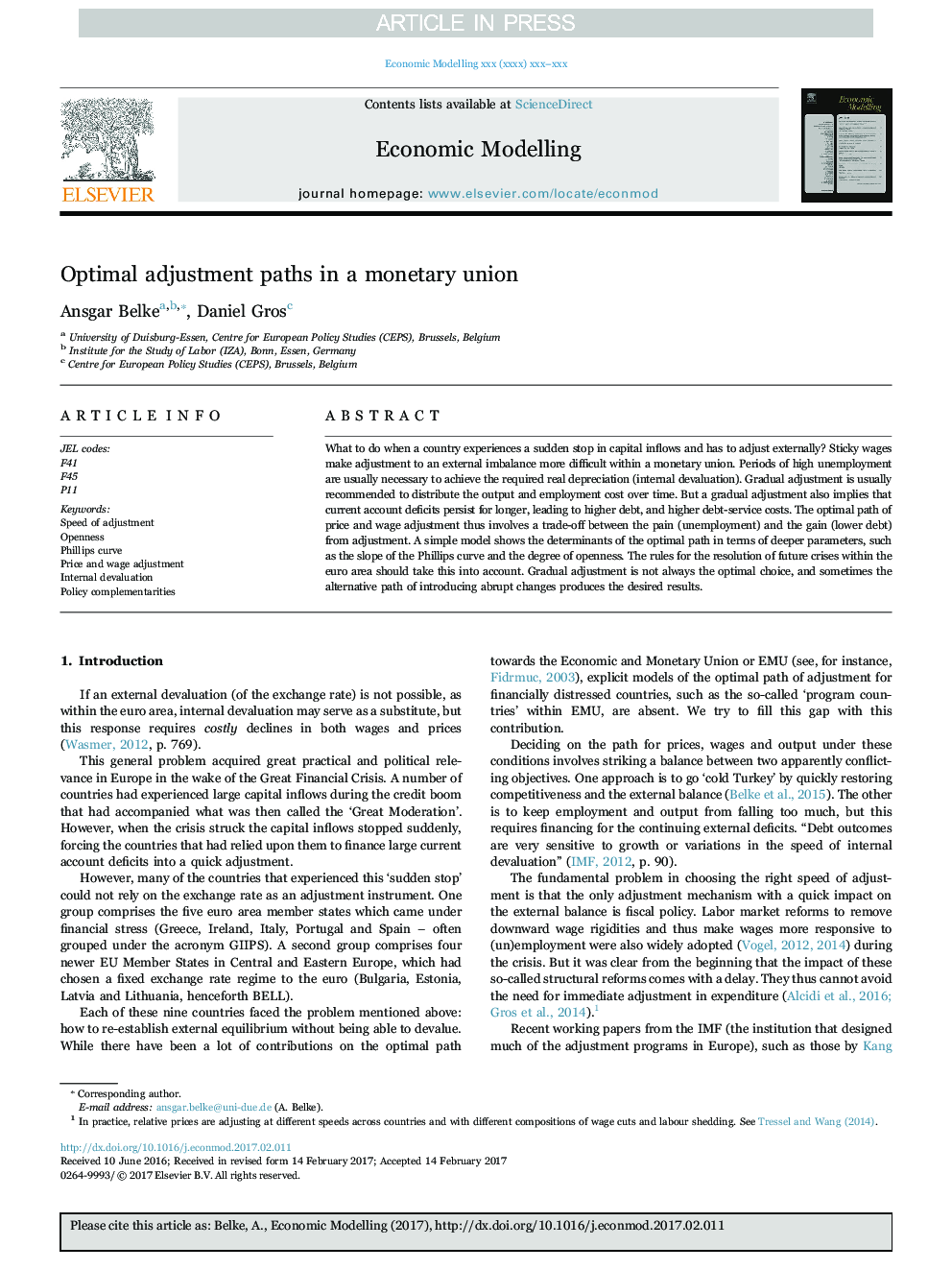| Article ID | Journal | Published Year | Pages | File Type |
|---|---|---|---|---|
| 7347828 | Economic Modelling | 2017 | 8 Pages |
Abstract
What to do when a country experiences a sudden stop in capital inflows and has to adjust externally? Sticky wages make adjustment to an external imbalance more difficult within a monetary union. Periods of high unemployment are usually necessary to achieve the required real depreciation (internal devaluation). Gradual adjustment is usually recommended to distribute the output and employment cost over time. But a gradual adjustment also implies that current account deficits persist for longer, leading to higher debt, and higher debt-service costs. The optimal path of price and wage adjustment thus involves a trade-off between the pain (unemployment) and the gain (lower debt) from adjustment. A simple model shows the determinants of the optimal path in terms of deeper parameters, such as the slope of the Phillips curve and the degree of openness. The rules for the resolution of future crises within the euro area should take this into account. Gradual adjustment is not always the optimal choice, and sometimes the alternative path of introducing abrupt changes produces the desired results.
Related Topics
Social Sciences and Humanities
Economics, Econometrics and Finance
Economics and Econometrics
Authors
Ansgar Belke, Daniel Gros,
